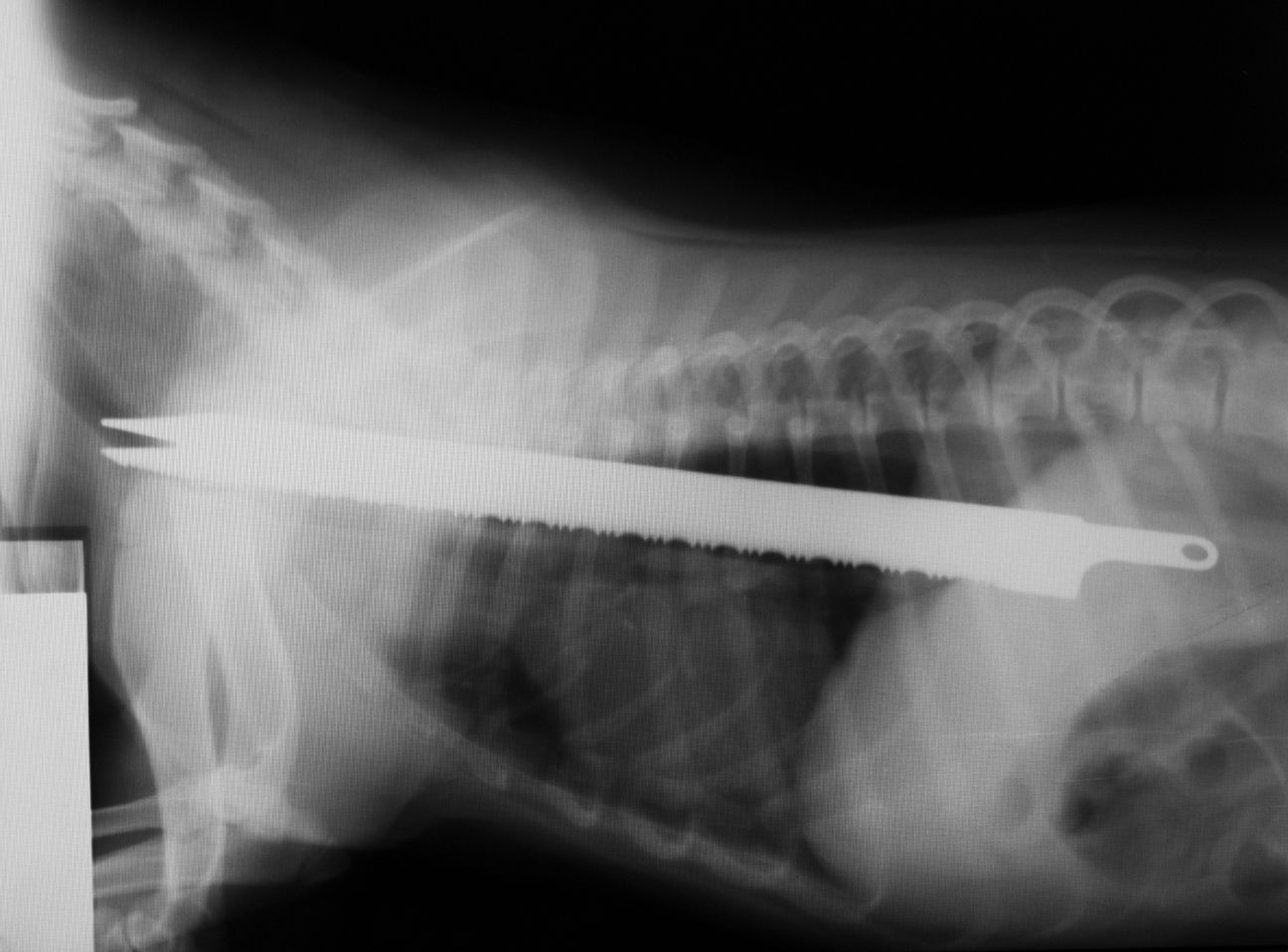Curious pets and dangerous foreign objects… here are some signs to clue you in that your pet may have swallowed something they weren’t supposed to!
I think that everyone can universally agree on this — a dog’s curiosity is an extremely endearing as well as an exasperating trait, simultaneously! How often have you chased after your dog, admonished him or her, and instructed them to drop whatever it is that they have picked up? More often than not, we have to engage in tussles and tugs-of-war with them when they pick up interesting (read: disgusting) objects while feeling adventurous.
Try as we might, there are always chances that your dog might end up ingesting objects like toys, bones, shoes, socks, rawhide chews, sticks, jewellery; need I go on? Even cats are prone to swallowing yarn, string, feathers or smaller objects like marbles when they play. All of these above-mentioned items could cause your pet to choke if they end up lodged in the roof of the mouth, pharynx, oesophagus or trachea. Sometimes the object might reach as far as the stomach or intestines and get lodged there, causing trouble. So how does one deal?

An object passed down the oesophagus but stuck in the stomach. (Image Courtesy- Anton Gvozdikov-Shutterstock)
Choking: How to Catch It, and How to Help
- There might be a sudden onset of panic; they might paw at their mouth and gums, coupled with high-pitched whining.
- Attempts to dislodge the object by coughing, sneezing, gagging or vomiting.
- A blocked airway can be made out by a bluish or greyish discolouration of the tongue or gums.
- Extreme cases may lead to loss of consciousness.
While there is a specific way of performing the Heimlich manoeuvre on an animal, it is not advised that a pet owner try this. Neither should they attempt CPR if the animal has lost consciousness. They might end up causing more harm than good. Also, it is never advisable to pry your dog’s mouth open to check whether an object is lodged; you could get bitten if your dog panics or reacts in pain. The safest thing to do is to restrain your dog so that they can’t hurt themselves, BUT DO NOT MUZZLE THEM; rush them to a vet immediately.
Gastrointestinal Foreign Bodies
Normally, ingested food takes about 10-24 hours to pass through your dog’s entire digestive tract. Some objects, however, can take much longer — up to months!
When an object is too large to pass through the gastrointestinal tract, it might get lodged in position and cause an obstruction. If it is close to the colon, it will usually pass naturally, but a problem arises if the ingested object is sharp or irregularly shaped, as this may cause injuries to the walls of the stomach or intestine. Here are certain signs you need to look out to clue you in that your pet may have swallowed something he or she wasn’t supposed to:
- A conspicuous absence of an object from your house (this is a joke)
- Persistent vomiting or diarrhoea
- Pain or tenderness on palpation of the abdomen
- A lack of appetite
- Straining while passing faeces or constipation
- Lethargy
- Behavioural changes like growling or reacting in pain when picked up
Diagnosis and Treatment
A foreign body can easily be caught on an X-ray, especially contrast X-rays. The most common contrast medium used for the gastrointestinal tract is a barium solution. Your dog’s gut motility can be checked, especially how the presence of the foreign body is impeding the motility by watching how long it takes to expel the barium.
Depending on the size, shape and location of the obstruction, the management can be conservative or invasive. Conservative treatment includes suppression of the symptoms like diarrhoea and vomiting. Stool softeners, laxatives or lubricants can be added to the diet to help the progression of the object along the tract. When a dog is in extreme discomfort, or is unable to take in any food or has severe recurrent vomiting, laxatives and lubricants can also be introduced per rectally via an enema.
The absolute worst-case scenario would require surgical intervention. While the surgical procedure in itself is relatively simple, your pet’s recovery and regaining of normal gut movement depend heavily on postoperative management. If your dog has gone through surgery to relieve it of or retrieve a foreign object, do not take post-operative follow-ups lightly. Each visit to your vet could dramatically improve your pet’s prognosis.
A Final Word of Caution
Being diligent around your pet ensures that they won’t accidentally or purposefully ingest something that does not agree with them. Safely stow away toys after playtime is over. Get toys of appropriate dimensions which can’t be accidentally ingested. Raise your dog to obey commands to drop an object that they may have picked up. A stern word can go a long way!